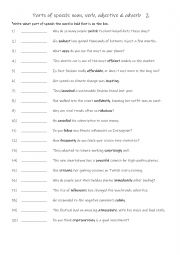
|
Parts of speech noun, verb, adjective & adverb 2
Learning parts of speech�nouns, verbs, adjectives, and adverbs�is essential because they are the foundation of English grammar. Mastering them helps students build grammatically correct sentences, communicate more effectively, expand their vocabulary, improve reading comprehension, and perform better in exams and writing tasks. Answers on page 2.
Level: elementary
Age: 8-100
Type:
Downloads: 107
|
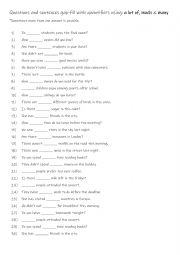
|
A1+-A2 Questions and sentences gap-fill with quantifiers using a lot of, much & many
Students complete the sentences using a suitable given quantifier in bold. Answers on page 2.
Level: elementary
Age: 8-100
Type:
Downloads: 123
|
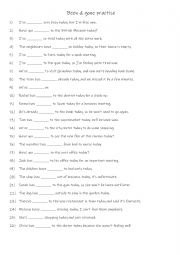
|
A2+-B1 Been & gone practise
Using "been" and "gone" properly helps students master the present perfect tense, which is essential for expressing completed actions that still impact the present.Misusing these words can lead to confusion about whether someone is still at a place or has already returned, so learning the difference is essential for clear communication. Each word i...
Level: intermediate
Age: 9-100
Type:
Downloads: 110
|
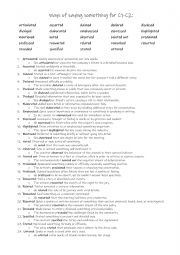
|
24 different ways of saying something for C1-C2
24 different ways of saying something for C1-C2 level. Pre-teach the vocabulary and then use page 2 which has all of the new words and a gap fill reinforcement activity. The answers are on page 3
Level: advanced
Age: 16-100
Type: worksheet
Downloads: 123
|
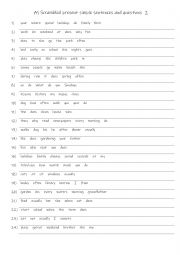
|
A1 Scrambled present simple sentences and questions 2
Practising scrambled present simple sentences and questions helps students understand correct word order, including subject-verb agreement and the use of auxiliaries in negatives and questions. It enhances their grammatical accuracy, boosts critical thinking as they rearrange words meaningfully, and improves their ability to form sentences quickly ...
Level: elementary
Age: 6-100
Type:
Downloads: 128
|
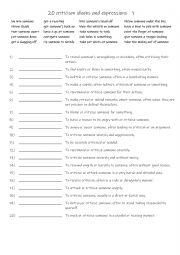
|
B1+-C1 20 criticism idioms and expressions 1
First, students need to familiarise themselves with the 20 idioms and expressions and their meanings. Then they read the definitions to see which one is being described and write that word in the space provided Answers on page 2.
Level: intermediate
Age: 12-100
Type:
Downloads: 126
|
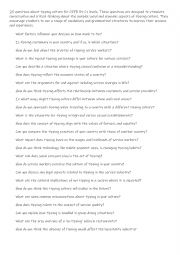
|
Tipping culture for CEFR B1-C1 (2)
25 questions about tipping culture for CEFR B1-C1 levels: These questions are designed to stimulate conversation and critical thinking about the complex social and economic aspects of tipping culture. They encourage students to use a range of vocabulary and grammatical structures to express their opinions and experiences.
Level: advanced
Age: 16-100
Type:
Downloads: 109
|
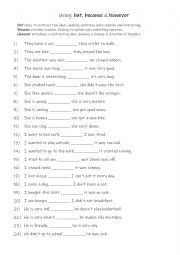
|
A1+-A2 Using but, because & however
Students read the description for usage on the 3 linking words, then fill in the gap-fill with the correct conjunction. This worksheet is suitable for A1+-A2 students. Answers on page 2
Level: elementary
Age: 8-100
Type: worksheet
Downloads: 127
|
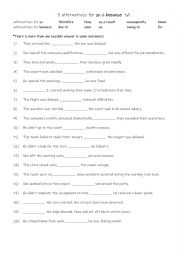
|
5 alternatives for so & because 1A
First, students need to familiarise themselves with the 10 words and check their meaning and use. Then they read the sentences to see which one is needed to complete the sentence. Each word is used 2 times! Answers on page 2.
Level: elementary
Age: 9-100
Type:
Downloads: 102
|
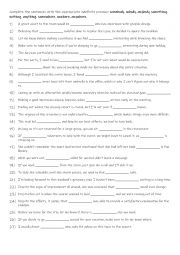
|
B1-B2 9 Indefinite pronouns
Each of the 9 indefinite pronouns is used 3 times. Students read the sentences and complete the gap-fill with the appropriate indefinite pronoun. Answers on page 2.
Level: intermediate
Age: 10-100
Type:
Downloads: 117
|












